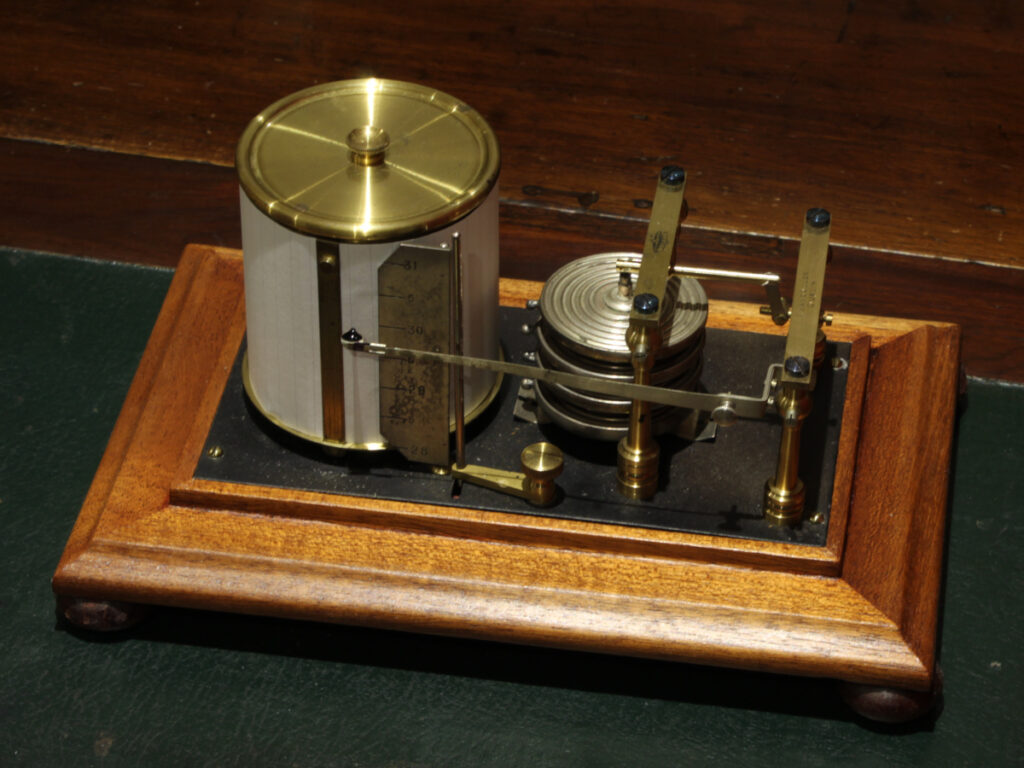An old barograph
A little while ago, Zach inherited a barograph, and spent some time cleaning it, including the mechanism and all the woodwork of the case. It ended up looking really good:

The question, of course, was whether it worked. He found a recipe for barograph ink, made a strip of paper the right size, and set it up for a week’s recording. (This was back in April but I’m only now getting round to writing this post.)
The result was this trace:

The gap near the right-hand end is where the clockwork wound down and needed winding back up again after a pause of unknown duration.
To be able to see whether this trace was close to the true air pressure, I had set up a job to fetch true air-pressure data from Met Éireann for a nearby location, running at the same time the barograph was ticking away by clockwork.
To see whether the two measurement histories line up, we have a small number of degrees of freedom. We can scale the barograph trace separately in the horizontal and vertical directions, and rotate it. We will also cut the trace at the break near the end, and line up the two pieces separately. We were hoping for some rough agreement to the extent of separating times when the air pressure was rising from times when it was falling.
We adjusted the scales and rotation as best we could by eye. There is some room for overfitting, but all the same we were very impressed with the result. The barograph trace (thin brown) is pretty much right on top of the true graph (thick pale blue). It’s a bit tricky to even see that there are two traces, apart from at the gap:

We think that the barograph is from the 1950s, and hadn’t run for many years, so it’s very cool that its record of the air pressure of this week lines up so nearly perfectly with the truth as measured by Met Éireann.